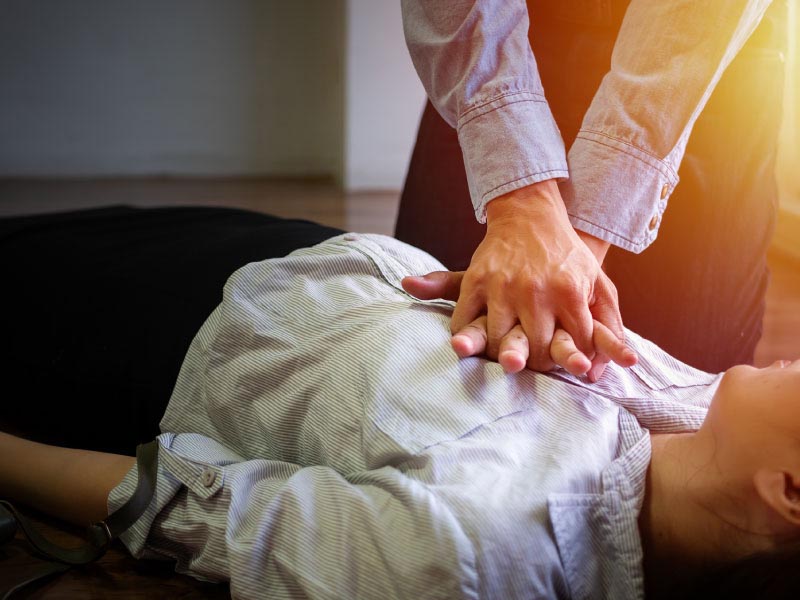Updated CPR guidelines address physical and emotional recovery
By Thor Christensen, American Heart Association News

The recovery period after cardiac arrest is now considered a key element of survival, according to updated guidelines for emergency CPR and heart care that also tackle health disparities and opioid overdoses.
The new guidelines issued Wednesday by the American Heart Association provide science-based recommendations to maximize someone's chance of surviving cardiac arrest, which occurs when the heart suddenly stops beating. Cardiac arrest results in death 90% of the time in the U.S. when it happens outside a hospital.
The guidelines, last updated in 2015, re-emphasize the importance of getting more bystanders to perform hands-only CPR until emergency workers arrive. Fewer than 40% of people who have an out-of-hospital cardiac arrest receive CPR from a bystander.
"Cardiac arrest is a life-or-death situation. When every second counts, it's important for lay people to be ready and willing to start CPR," said Dr. Raina Merchant, chair of the AHA Emergency Cardiovascular Care Committee that helped write the guidelines, published in the AHA journal Circulation. She is an associate professor of emergency medicine at the University of Pennsylvania in Philadelphia.
The guidelines recommend lay rescuers initiate CPR on a person with presumed cardiac arrest, because the risk of harm to patients from CPR is low even if their heart hasn't stopped beating.
"We strongly reaffirm the need for lay people to press hard and fast in the center of the chest for 120 compressions per minute, at least two inches deep," Merchant said, adding that remembering the beat and chorus to the Bee Gees' hit "Stayin' Alive" can help bystanders know how fast to press.
One of the biggest guideline changes, according to Merchant, is adding recovery as a link in the official "chain of survival."
That is a series of critical actions that include calling 911, performing CPR and using an automated external defibrillator, or AED, a device that restores a normal heartbeat by sending an electric shock to the heart. The recovery phase consists of the need for treatment, surveillance and rehabilitation for cardiac arrest survivors, including assessment for anxiety, depression and post-traumatic stress.
"It's a new focus on, what can we do to support their physical, cognitive and psychosocial needs after they have a cardiac arrest and after they leave the hospital?" Merchant said. "The latest research tells us that's really important."
In all, the 2020 guidelines update makes 491 recommendations about adult, pediatric and neonatal CPR life support and resuscitation. Some of the other important new or updated recommendations include:
– Two new opioid emergency protocols emphasize that lay rescuers and trained responders should not delay activating the emergency response system and giving naloxone when appropriate, and to provide immediate CPR for a cardiac arrest caused by an opioid overdose.
– New methods to use mobile phone technology to increase the rate of bystander CPR and use of an AED. For example, emergency dispatch systems could use phone apps to alert willing bystanders of a nearby event where help is needed.
– Encouraging bystander training tailored to socioeconomic, racial and ethnic populations with lower rates of bystander CPR. Training also should address gender-related barriers to improve bystander CPR rates for women.
– A new recommendation for pediatric CPR that uses one breath every two to three seconds, a total of 20 to 30 breaths per minute.
If you have questions or comments about this story, please email [email protected].





